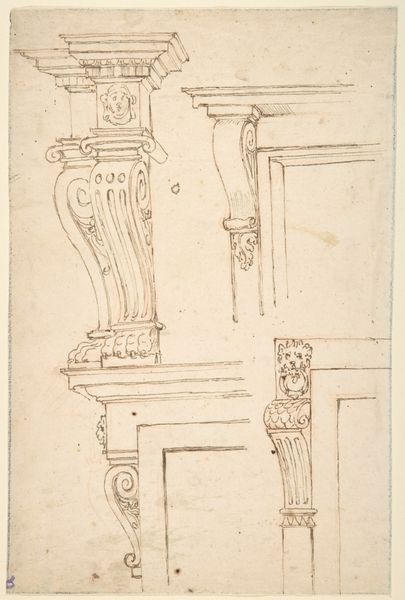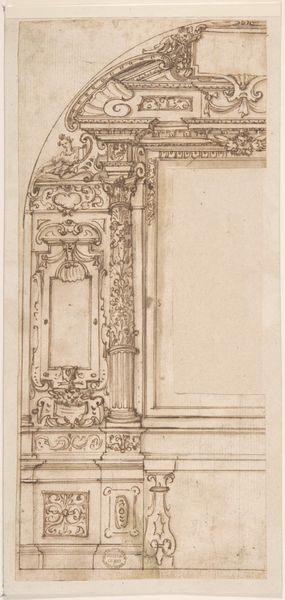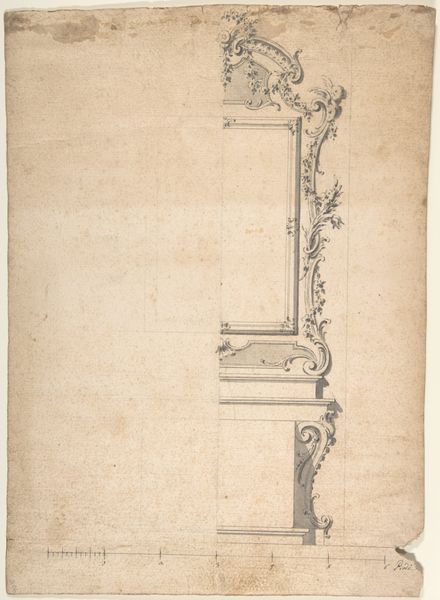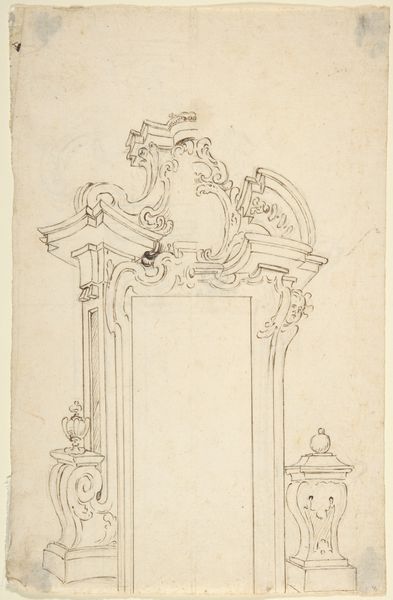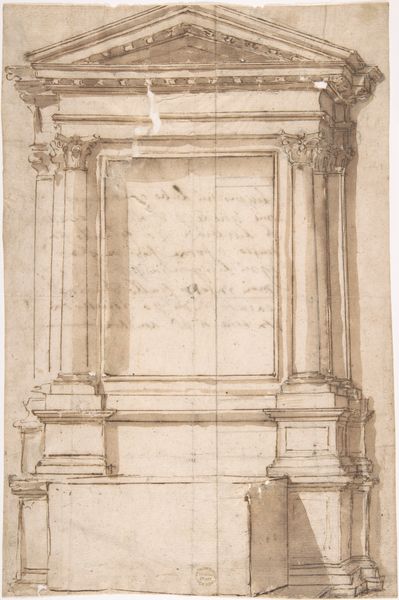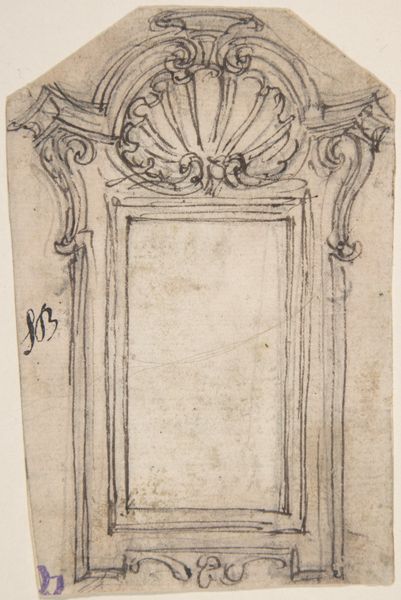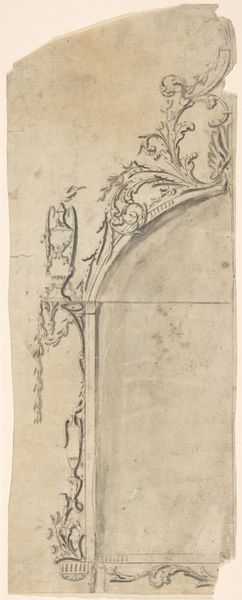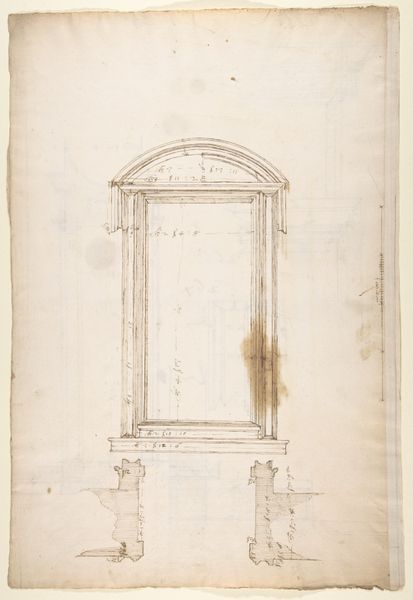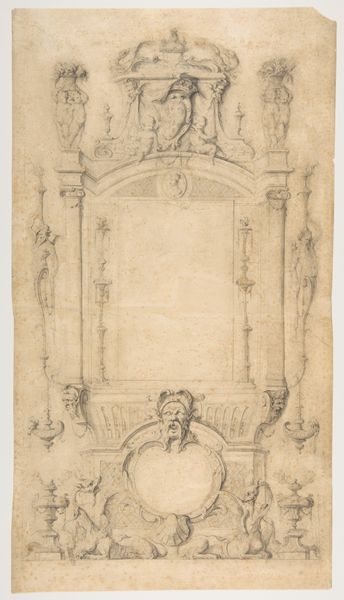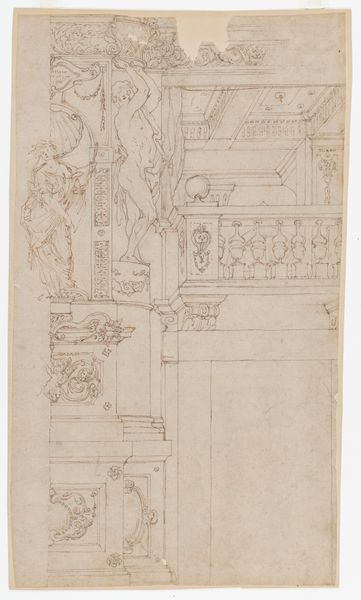
Left Half Design for an Architectural Project 1730 - 1766
drawing, pen, architecture
drawing
baroque
classical-realism
form
line
pen
architecture
Dimensions: Overall: 7 3/4 x 3 7/16 in. (19.7 x 8.7 cm)
Copyright: Public Domain
Curator: Look at this stunning "Left Half Design for an Architectural Project" by Mauro Antonio Tesi, created between 1730 and 1766. The artist used pen and brown ink over black chalk. What catches your eye first? Editor: Its incompleteness, the architectural fragment rising from the page, and the almost unsettling level of ornamentation! It speaks of grand aspirations, classical excess even, yet remains just a portion. What sort of building was this imagined for? Curator: Exactly! It points to a world where power and visual impact are paramount. The Baroque style is evident in the twisting column and ornate capital. How does it fit within the socio-political context of its creation? Aristocratic dominance, surely. A display of wealth, power... masculinity. Editor: Indeed. The choice of pen and ink tells us something too. There’s an immediacy and a control inherent in it, unlike preparatory sketches. It almost elevates architectural design to an independent art form. Who would’ve made such choices for architecture beyond the aristocrats and artists in their employ? The column winds with what looks like foliage, but is actually carefully chosen embellishment. Curator: And notice how Tesi doesn’t just present a clean elevation. The shading and shadows provide a sense of three-dimensionality, further enhancing the design's ambition. It's interesting to reflect on the impact of these drawings on society, influencing architectural and political identities of the time. Editor: Consider the production, too. Pen and ink were comparatively accessible materials, pointing to the broadening scope of architectural design beyond just the elite. Tesi likely benefited from growing trade economies in his time. A massification of classical dreams. This is art directly influencing lived experiences, and thus a tangible display of social forces and how they literally create environments and who benefits from those environments. Curator: Absolutely. It makes me consider those left outside of the design—the unnamed workers, the unseen hands, those not considered when visualizing who gets to experience or profit from these spaces. Thank you. Editor: The incomplete form lingers in the imagination... so the unseen labour behind what *could* be done is there too.
Comments
No comments
Be the first to comment and join the conversation on the ultimate creative platform.

